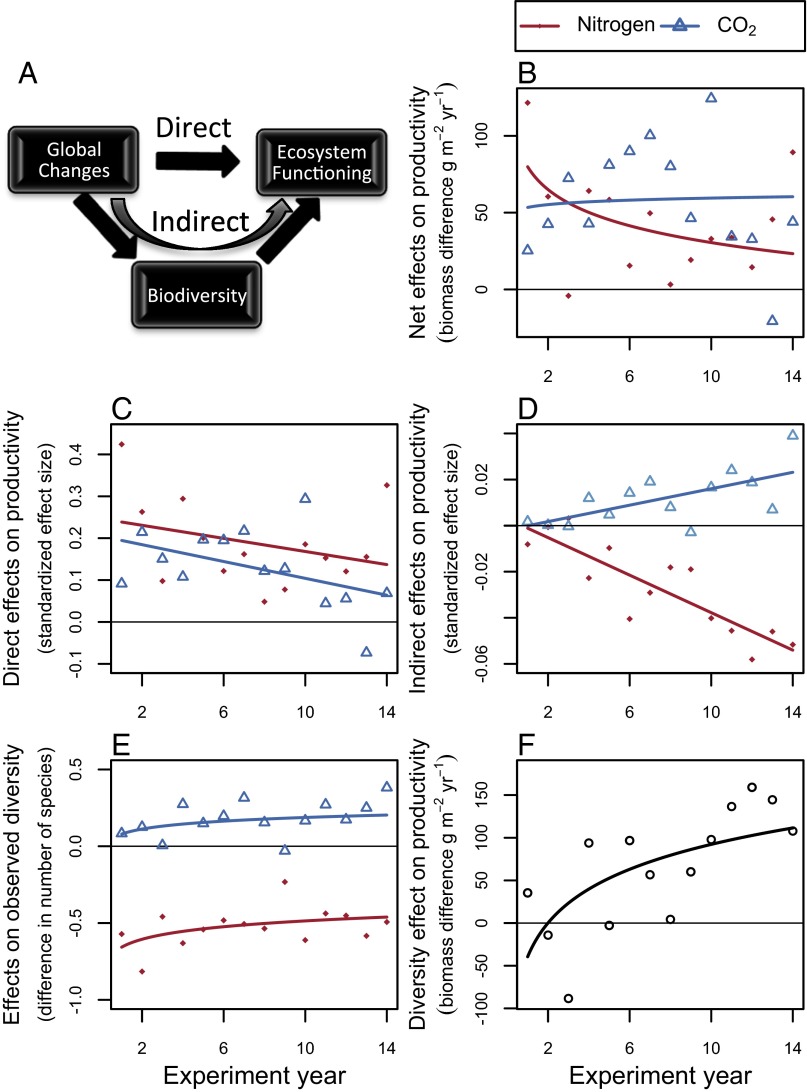Fig. 2.
(A) Global environmental changes may indirectly influence ecosystem functioning by changing biodiversity. (B–F) Results from the BioCON experiment. Net effects on grassland plant productivity (B), which can be split into direct (C) and indirect (D) components, which can subsequently be split into effects of N and CO2 on observed diversity (E) and the effect of planted diversity on productivity (F). The positive effect of N enrichment on productivity diminished over time (P = 0.0188) (B), partly because N enrichment slightly decreased observed plant species diversity (P < 0.0001) (E) (Table S1). In contrast, there was no significant temporal trend in the positive effect of elevated CO2 on productivity (P = 0.77) (B), partly because elevated CO2 did not significantly influence observed plant species diversity (P = 0.49) (E) (Table S1). Effects in B, E, and F were estimated by linear mixed effects models (Table S1); effects in C and D were estimated by a structural equation model. Differences in biomass (B) or number of grassland plant species (E) were quantified between enriched and ambient plots, with positive biomass differences indicating that enriched plots were more productive, and with negative species differences indicating that enriched plots had fewer species, than ambient plots. Biomass differences for diversity effects (F) were quantified between plots planted with 16 and 4 grassland plant species, with positive values indicating that diverse plots were most productive.

